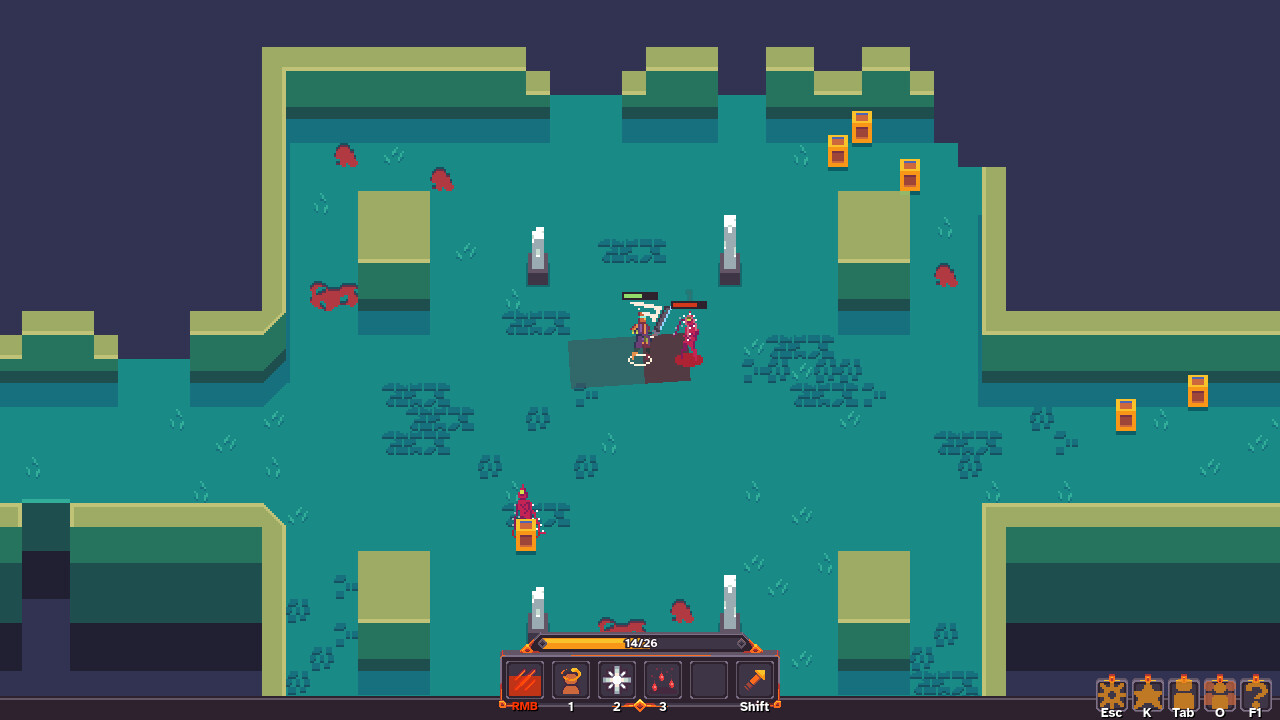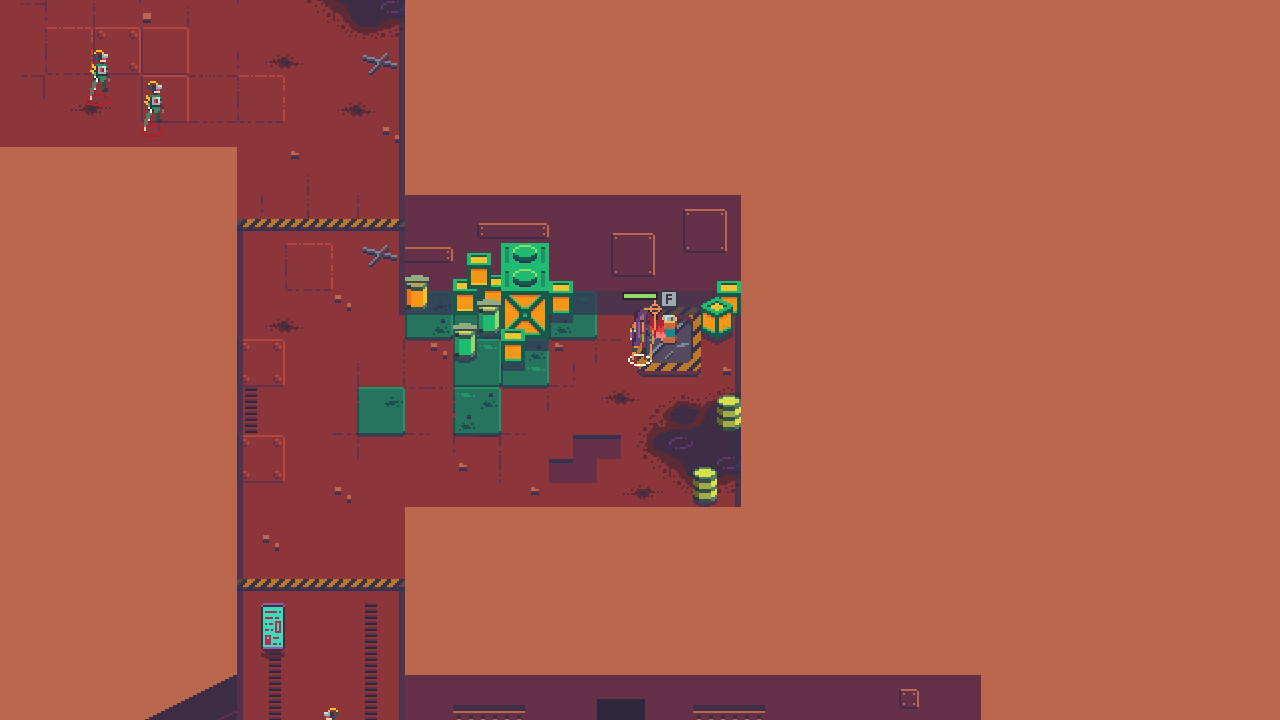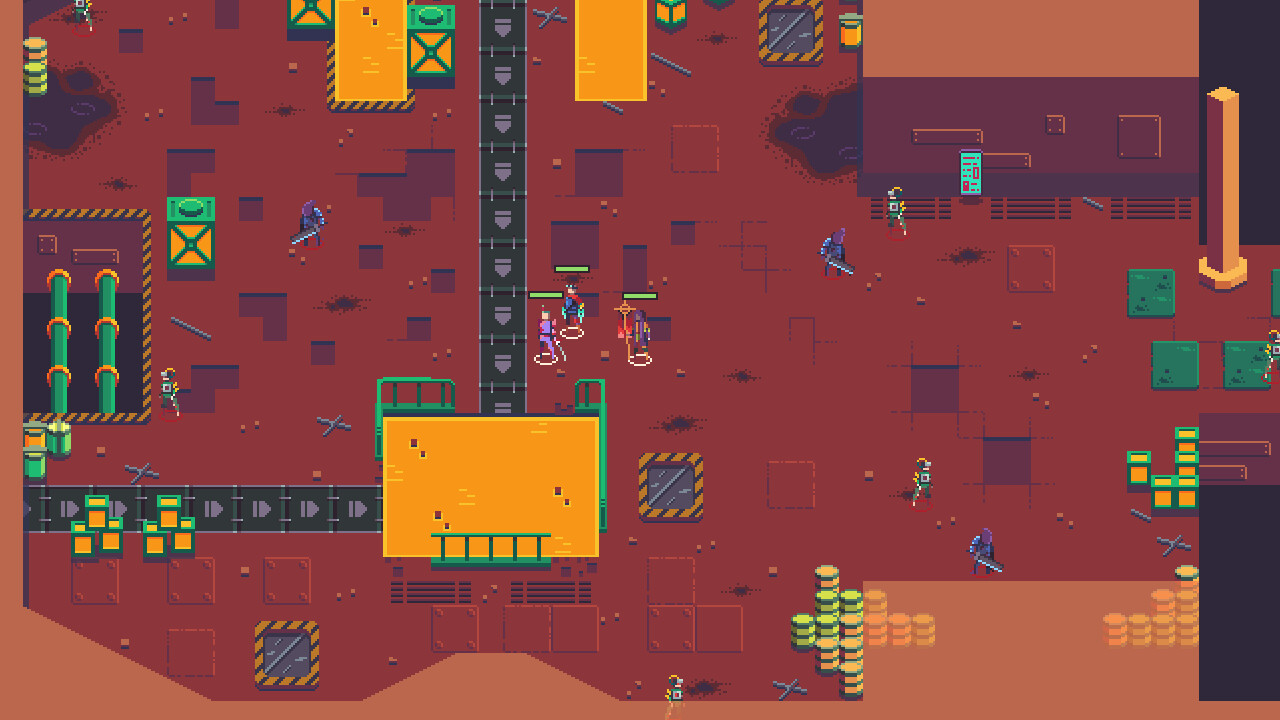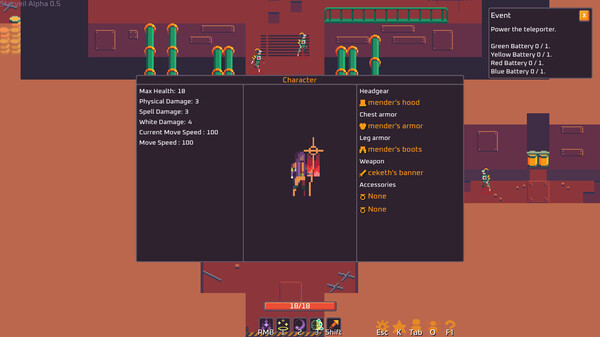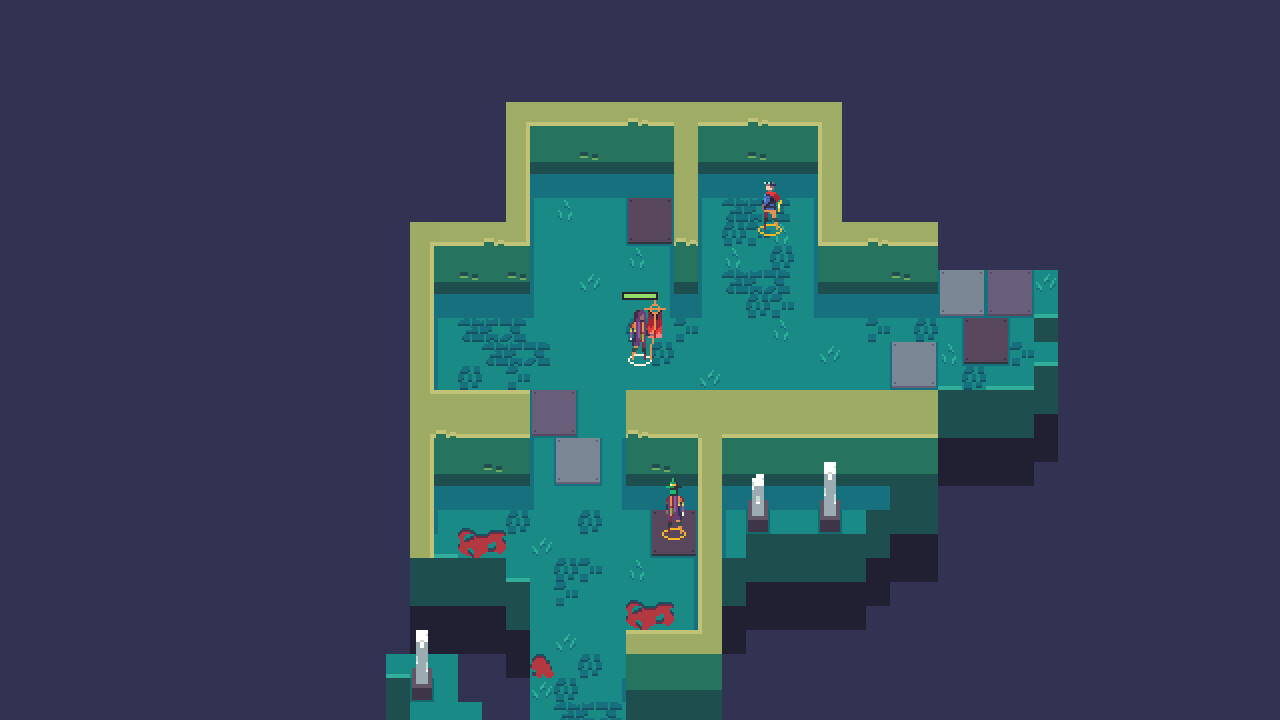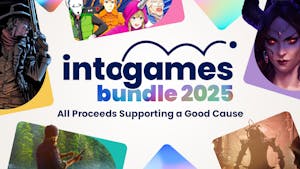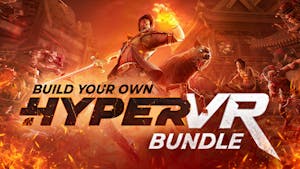Features
- Seasonal Loop: Starveil features a cyclical gameplay loop where player progress resets at the end of each season. With no player levels, the game is designed to get you into action almost immediately.
- Shattered Realms: Traverse a diverse array of worlds, each with its own unique environment, inhabitants, and dangers. From ancient ruins to futuristic metropolises, explore breathtaking landscapes filled with wonders and perils.
- Dynamic World Regeneration: Witness the whole world transforming and regenerating, introducing new challenges, dungeons, and secrets. No two seasons are alike, guaranteeing an ever-changing gameplay experience.
- Action Combat: Engage in fast-paced combat with a variety of weapons and abilities. Hack through hordes of enemies, unleash devastating spells, wield futuristic firearms, and collect valuable loot to enhance your character's power.
- Character Progression and Customization: Embrace the boundless potential of character customization in Starveil. Breaking away from traditional character classes, the game introduces a dynamic and versatile ability system that empowers you to precisely tailor your skills to match your unique playstyle.
- Cooperative Multiplayer: Join forces with friends or other players in thrilling cooperative gameplay. Team up to tackle formidable bosses, conquer challenging dungeons, and uncover the secrets hidden within the shattered realms. Cooperation and strategy are key to survival.
Licensed under Creative Commons: By Attribution 4.0 License (http://creativecommons.org/licenses/by/4.0/)
Hey everyone, Vildravn here, one of the devs of Starveil.
I have posted this on my blog, but I think it's good to also post a variant of the postmortem here on Steam so without further ado, here goes.
[hr][/hr]
Its been two years since I have started a very ambitious project with my friend, Sukkoy. We have set out to make an online game, a little MMORPG, just to see if we could. That project has turned into Starveil.
In a way you could say weve succeeded, in small scale tests the game is quite playable, and in my humble and totally unbiased opinion, quite fun as well. But two years on, Starveil is nowhere near being playable by the public and the reasons for that are multiple. In this post, I want to take a look back at Starveils development.
Please note that I am writing this only from my own perspective and am not speaking for Sukkoy or anyone else who has helped out with Starveil.
The Beginning
As we set out to make a small prototype, a technical test, or a proof of concept of sorts, we settled on Godot Engine. At that time, Godot 4 was in an early beta but it was already showing a lot of promise with improvements over Godot 3 when it came to multiplayer.
The initial tests were very promising. Sukkoy very quickly put together a simple test, a game client with a standalone dedicated server, both in Godot. First we just connected a bunch of game clients to the server and ran around, then we added some bots, and attacks, fixing issues and figuring things out along the way. Performance seemed quite good, so we excitedly moved onto fleshing out the game design, art and even a bit of lore, to give the game some identity.

Early network benchmark prototype of what would become Starveil
The Gameplay
Starveil was to be a multiplayer action RPG of the likes of Diablo, but mixed with traditional MMO elements. From this, two different types of areas emerged: Hand-made public open world maps, intended for solo play as you would see in most MMOs, and randomly generated dungeon maps usually experienced in action RPGs serving as the group content.
The skill system was very much inspired by Magic: The Gathering with 6 colored groups roughly representing a different functionality or role. For example, white skills would represent healing and red ones were all about dealing direct damage. Each skill then had one or two colors, based on what it did. The colors also acted as equipment costs for the skills, which tied into player classes: Each of the four classes had a differently colored pool of resources to spend on equipping skills, with more room to add more classes down the line. And yes we called this pool Mana because we couldnt come up with anything more original :)

An interface window showing the library of available skills
Perhaps the most controversial decision that has also informed some other things about the design of Starveil was the fact that it was supposed to be a strictly seasonal game. Each season would run for a few months, after which all characters would be wiped away and the world would reconfigure itself, with a new pool of zones, dungeons, enemies, loot, and so on. A central hub would serve as a kind of community meta-progression with long term goals to unlock upgrades, advancements and features, and it would also be the only zone in the game that would not get reset and reconfigured.
To take some sting out of deleting player progress periodically and to make sure its possible to jump back into action quickly, we settled on not having any leveling up, and even gearing up should have been quick enough so players could have reasonably powerful characters within a few hours. The motivator to keep playing would be earning rare-ish skins and other cosmetics, which of course would not be wiped between season resets either.
In retrospect, I think the skill system has held up really well, and even though it wasnt explained properly it was received well in playtests, with players grasping even some deeper complexities of character building.
The seasonal aspect though, while a sort of roguelike take on a whole server level is definitely interesting and comes with some benefits - namely balance and cheating is in theory not that big of an issue if progress gets wiped - it comes with some severe downsides especially on the development side of things. We have set a really crazy pace for us before we even really started, providing a fresh set of content every few months is just too much. Even every year would probably be quite ambitious for two guys working on an indie game in their free time, while juggling lives and jobs.
We have never gotten to a spot where we would be able to test and prove the concept of the seasons either. Its very possible that losing progress on a regular basis is something players would have a hard time reconciling. I wonder how many would come back for subsequent seasons.
The Art
The cornerstone for Starveils art was color. We looked at other action RPGs like Diablo, Path of Exile, Grim Dawn and all we saw was greys and browns and darkness. We wanted something different, something where you could tell what was going on from one still screenshot. We looked to Hyper Light Drifter and a few others for inspiration as pixel art was the obvious choice here given Sukkoys great skills as a pixel artist. My artistic skills unfortunately are those of a weathered brick.
Being set in a sci-fi fantasy universe with varied pockets of realities gave us a lot of freedom to experiment and come up with vastly different environments and enemies. The two zones settled on for the initial demo were Necroforge, a factory overrun by zombified workers and rebelling automatons, and Mycotic Grove inhabited by sentient mushrooms and a curious society of robots stuck cosplaying for renaissance fair.

Necroforge and Mycotic Grove side by side
I do not know how this even came about anymore, perhaps to allow for more player self-expression, but we have decided that headpieces, body armor, leg armor and weapons should be shown on characters separately, reflecting the kind of item the player has equipped. This decision has resulted in a frankly massive amount of animations, and was something that again, was definitely too much for a hobby project. Except this time poor Sukkoy was pretty much alone for this, as all I would really be able to help with are simple recolors, definitely not original item art, let alone animations. Since we had multiple weapon types and attack animations, every single piece of armor needed to be animated to match those.
Pair this with a large library of skills that should ideally all have separate visual effects and youre starting to wish for a small art department to handle all that. I certainly did.
Despite that though, the art has definitely been a big highlight of Starveil. Its eye-catching, in my opinion gorgeous, and even if the gameplay wasnt everyones cup of tea, the visuals were consistently getting compliments from people who have seen or played the game.
What has also elevated Starveil art-wise was the UI art. I initially tried my hand at drawing some, and I was very happy with what I came up with considering Ive never done this kind of thing before (you can read more about that particular journey in this Mastodon post ). But then a friend reached out and offered help, and made some very professional interface art, and even though I spent a lot of hours drawing mine, I was so happy to replace it.

Reference image for Starveils UI with authors name blurred out as they wished not to be credited
Looking back, I am really happy with how Starveil has turned out on the visual side of things and I am super happy and proud to show it off every chance I get. The only regrets I have is not being able to help more, and Sukkoy ending up in a special circle of hell, drawing dozens of animations of every little piece of armor. We really shouldve gone with full body skins, perhaps with multiple movesets matching the equipped weapons.
The End?
Theres still so much work left to do on Starveil to fulfill its ultimate goal as a pay to play multiplayer online RPG.
There are backend bits that are still missing, the whole season system isnt in place, and we dont even have sound effects or music. And then there are other issues that haunt me. Us stubbornly rushing into making an MMO-like game with a dedicated server means we have to contend with latency a lot more than a peer to peer game would. Hosting a dedicated server isnt cheap, and realistically we would need at least two or three to provide a satisfactory experience for players anywhere on the planet. A P2P game would be a very different game though and we would have to almost start from scratch.
But ultimately, the energy just isnt there. Either for continuing Starveil in its current form, or for restarting it as something different. We have decided to put it on the back-burner for now, and were comparing it to something of a zen garden, poking at it slowly when we feel like it.
One of the reasons for writing this post was for me to get a bit of closure on the whole thing, and to learn to move on. Thats not to say the game is dead, or that we are abandoning it even though I have been using the past tense. But it is time to focus attention elsewhere, and who knows, maybe regain the strength to continue one day and pick Starveil up where we left off.
~ Vildravn
Minimum Setup
- OS: Ubuntu 20.04 or newer | Steam OSGraphics: Vulkan 1.0 capable graphics cardNetwork: Broadband Internet connection
- Graphics: Vulkan 1.0 capable graphics cardNetwork: Broadband Internet connection
Recommended Setup
- OS: Ubuntu 20.04 or newer | Steam OSGraphics: Vulkan 1.2 capable graphics cardNetwork: Broadband Internet connection
- Graphics: Vulkan 1.2 capable graphics cardNetwork: Broadband Internet connection
[ 6524 ]
[ 4514 ]
[ 5360 ]

